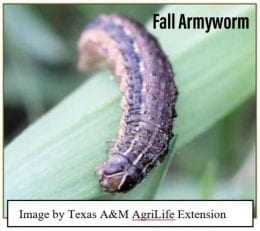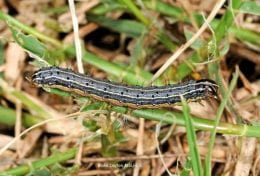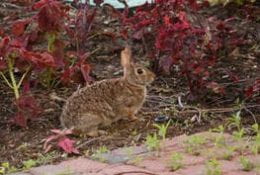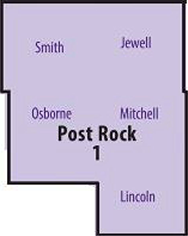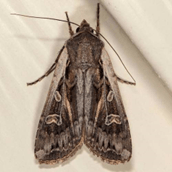 Have you been bombarded by moths this year?
Have you been bombarded by moths this year?
They are actually army cutworm adults. The army cutworm adult moths have dark, gray-brown forewings and distinct markings.
Adult females lay eggs in the fall with caterpillars emerging from eggs from fall through winter. The caterpillars (larvae) feed on alfalfa and wheat. Army cutworms overwinter as larvae in the soil. Adults emerge from pupae located in the soil in May.
Why such a big outbreak? There is no direct answer, but outbreaks of army cutworm tend to occur every 10-15 years. There is one generation per year in Kansas.
For more information, check out the Kansas Insect Newsletter-
https://entomology.k-state.edu/doc/extension-newsletters/2023/KSInsectNewsletter%2005.pdf
By: Cassie Thiessen
 color of green as the plant leaves. Early control is important. Follow this link for more information on controlling cabbage worms.
color of green as the plant leaves. Early control is important. Follow this link for more information on controlling cabbage worms.